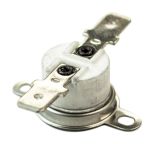
Selco
1 Product showing for Selco
1 of 1
Currently unavailable
- RS Stock No. 111-7793
- Mfr. Part No. ORA-350-QC
- Brand Selco
- Minimum Temperature +10°C
- Maximum Temperature +260°C
- Opening Temperature +350°F
- Closing Temperature +290°F
Each
$24.66(exc. GST)
Results per page
